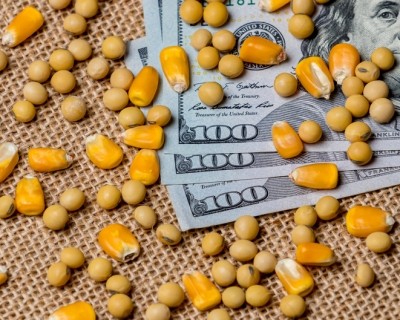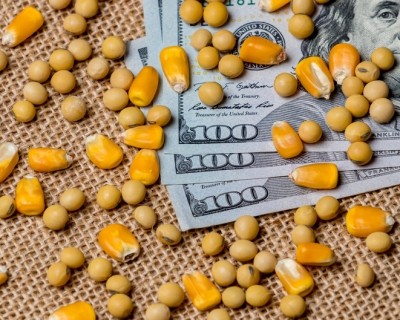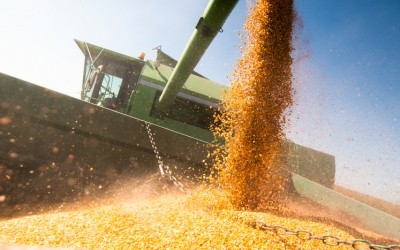USDA: US corn prices weaken following coronavirus spread

The US Department of Agriculture (USDA) released details Tuesday regarding the anticipated production and sales of feed crops and grains in the March World Agricultural Supply and Demand Estimates (WASDE) report.
The ongoing global outbreak of Covid-19 had some influences on crop demand, the USDA reported. Prices for corn and wheat and demand for palm oil all saw challenges related to disease spread.
Prices for US wheat dropped in February based on competitor prices and losses in markets related to the spread of the disease, the department said. “Exporter prices generally trended lower during the month of February, following other markets lower on rising concerns related to the spread of COVID-19,” the department added.
Similarly, price bids for corn have fallen based on uncertainty generated by the spread of Covid-19 and calm weather in South America, noted the USDA. Chinese imports of palm oil also saw lower demand linked to the disease.
Weather challenges
In addition to challenges from the ongoing disease spread, US producers may see a return of some of the conditions faced during planting season last year when continuing cold, wet weather limited access to fields and restricted feed crop planting.
This year, producers across parts of the Corn Belt could again see a wet start to the planting season, said Jim Noel, service coordination hydrologist with the National Weather Service’s Ohio River Forecast Center.
Although there has not been as much precipitation in the last month as there was last year at this time, soil conditions continue to be abnormally wet throughout parts of the corn and soybean belts, he told FeedNavigator.
“Going forward, we have an active weather pattern that supports higher rainfall through the spring in the Ohio River valley,” he said. “[With] wetter than average conditions expected there will be challenges, if not to the level of last year.”
One positive element this year is that conditions are expected to be warmer than average, he said. “When you have cold [temperatures] and wet it’s harder to get rid of the water,” he added.
The warmer weather is expected to help with early plant growth and to reduce topsoil water faster, he said. “That is some positive news.”
Last year a high-pressure system that covered northwest Canada and parts of Alaska suppressed the storm track and kept weather patterns from seeing much movement, Noel said. “This year it doesn’t look as locked into place.”
Additional information about flooding and anticipated conditions will be released in mid-March, he said.
Corn and coarse grain development
In the US, production and use of the 2019/20 crop remain consistent, the USDA reported. However, the season-average corn price fell to $3.80 per bushel.
Looking globally, coarse grain production for 2019/20 is anticipated to be 1.40bn tons, the department said. Consumption, growth and stocks all increased slightly from earlier forecasts.
Corn production was increased by 0.4m tons with growth in South Africa somewhat offset by smaller crops in India, Peru and Russia, the department said. “For South Africa, production is higher as continued favorable conditions during the month of February boost yield prospects.”
In 2019/20, Ukraine, South Africa and the EU are anticipated to have increased exports while Brazil’s sales for 2018/19 marketing year – which ended in February – were lower than expected, the USDA said. Corn imports for 2019/20 have been increased for Canada and Peru and lowered for the Philippines.
International ending stocks for corn were increased based on stocks in South Africa, Canada and Russia and only slightly offset by smaller stores in Argentina. Ending stocks are set at 297.3m tons.
China’s sorghum imports expanded – mostly based on purchases from the US, the department said.
Oilseed growth, use and sales
In the US, soybean crush and exports soybean crush in 2019/20 is projected to be 2.1bn while exports reach 1.8bn bushels, the USDA said. Ending stocks are anticipated to be 425m bushels, a drop from last year’s record levels.
Prices for the feed ingredient fell this month, the department said. The season-average price for soybeans is down $0.05 to $8.70 a bushel, although soybean meal remained $305 a ton.
Globally, projections for oilseeds anticipate increased production and higher stocks, the USDA said. Soybean production has been increased 2.4m tons to 341.8m based on larger crops in Argentina and Brazil.
The forecasted crop in Brazil was expanded to 126m tons while Argentina reaches 54m, the department said. “Argentina’s larger crop is due to overall favorable conditions in higher-yielding central and northwestern farming areas.”
However, anticipated soybean crush fell in Argentina, the department added.
Larger production coupled with the decline in use expanded ending stocks to 102.4m tons, the USDA said.
In addition to soybeans, a drop in palm oil production lowered totals by 1m tons, the department said. The change came mostly from Malaysia and Columbia and indicates a 19% year-over-year decline in vegetable oil stocks.
Wheat production
Global wheat production anticipates increased use, production, exports and reduced ending stocks, the USDA said.
Larger crops in India and Argentina are expected to offset production in Turkey and Australia, the department said. US production remains consistent and the projected season-average farm price continues to be $4.55 per bushel, although prices for all wheat classes fell in February.
World exports were increased by 0.8m tons to 183.6m based on higher sales from Russia and Argentina offsetting declining exports from Canada and Australia, the department said. Turkey’s wheat imports were increased by 2m tons to 10.5m based on increased consumption, smaller production and altered import policy.
Following Egypt and Indonesia, Turkey has become the third-largest importer of wheat globally, the USDA said. Imports are also anticipated to increase for Bangladesh.
Ending stocks remain “record large” but were lowered for the 2019/20 crop year to 287.1m tons, the department said.













